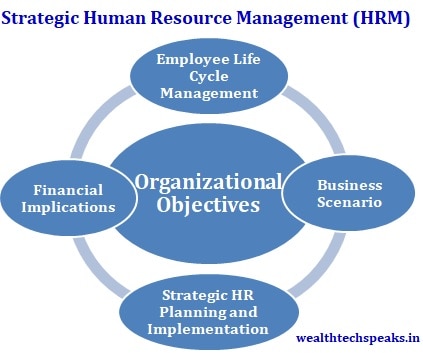Endowment Insurance Plans: An Insight
- Posted By Amritesh
- On June 28th, 2015
- Comments: one response
Endowment Insurance Policies are classical Insurance policies which combine Savings cum Insurance benefits. This type of Insurance policies are for fixed tenure of 10,15,20 years or more. The premium on these policies is relatively higher as compared to Term Insurance Policies. The premium can be paid on one time lumpsum basis or periodically (ie, Monthly,Annually,Quarterly,etc).
Endowment Policies are Life Insurance Policies which payout a lumpsum on completion of the policy term or on death of the policy holder. Generally, Endowment Policies are available in two categories, namely, Endowment Policies with Profits (Traditional) and Market Linked Endowment Policies (A certain percentage of Investment is vested in Equities and Money Market.)
Endowment Policies have a maturity value. Individuals who wish to terminate the policy before the completion of tenure have the option to do so and will receive a surrender value against the same as per the terms of the policy and duration for which the premiums have been paid.
Endowment policies are preferred mostly by conservative investors as they see it as an investment cum life cover option. Furthermore, Premium paid towards the Endowment Policies is eligible for Tax Deductions as well.
Read About: Money Back Plans
Read About:Term Insurance Plans
Read About: Money Back Plans
Read About:Term Insurance Plans
TYPES OF ENDOWMENT PLANS
Full Endowment Plans: These endowment plans are also known as Endowment plans with profit. Here the basic sum assured is equivalent to the death benefit stated at the start of the policy. However, on completion of the tenure, bonuses are paid above the Sum Assured. The bonus is declared annually which is known as Revisionary Bonus apart from it, on maturity of the policy an additional bonus may also be provided which is known as Terminal Bonus depending on terms and condition of the Policy.
Thus the final maturity amount is much higher than the Sum Assured mentioned on the Policy certificate.
In reality, you can expect maturity amount to be atleast 2-3 times of the Sum Assured. Investment wise it is not a great option as you will hardly earn a return of 6%-7% on the investment.
Unit Linked Endowment Plans: Investment/Premiums under this Plan are invested in specified Investment Funds. The Policy holder has to exercise the option of choosing the proportion in which he/she wants to divert the premium in various fund. Generally the investment is made into bonds, equities and other fixed return instruments. Over a long term period, Individuals may be able to generate better returns on these Plans as compared to Full Endowment plans but the Investment involves a bit more risk as it is linked market performance of the Investment Funds.
Unit Linked Schemes are more risk prone as compared to Full Endowment Plans, however the returns in general are far better in such schemes as compared to the latter.
Low Cost Endowment Plans: It is combination plan usually used to pay off a mortgage, the insured may have to increase the premium to meet the estimated/targeted Fund. Here the Life cover charges get reduced with time to focus more on targeted fund growth. On death however, the targeted fund will be paid as Minimum Assured amount.
These kinds of policies are not too relevant in India and not recommended for Individuals.
FEATURES AND BENEFITS OF ENDOWMENT PLANS
- Endowment Plans are Life Insurance Cover which have a maturity value as well as surrender value.
- Endowment Plans do offer returns in form of bonuses and additional bonus on the investment.
- The return on the Investment is compounded on annual basis.
- Death/Maturity Benefit is equal to the Sum Assured cum additional bonuses and royalties declared under the plan.
- Premium on the Endowment Policy is much more as compared to Term Policy as it is a saving cum insurance scheme.
- Endowment Policy also provides additional benefit such as Critical Illness Cover for the insured depending on the terms and conditions of the Policy.
- Loans can also be availed against the Endowment Policy by the Insured as it has got a Maturity Value.
- Endowment Policy also does not require Individuals to go through various medical tests for purchasing a policy.
TAX BENEFITS
Tax Benefit is available U/S 80C (upto Rs 1,50,000/-) for Investments in Life Insurance Policies. Maturity/Death Benefits is exempted from Tax U/S 10 (10D).
MATURITY/SURRENDER VALUE
Endowment Policy has a definite Surrender and Maturity Value.
FREE LOOK IN PERIOD
Most Endowment Policy come with at least 15 days of Look In period. During which you can have a detail look into the policy and decide whether you are going to continue with or reject it.
GRACE PERIOD
A Grace period of 30 days after the due date is allowed for the Annual Payment of Policy Premium. Failing which the policy will lapse.
POLICY TERMS AND CONDITIONS
Each Insurance company tries to offer some additional benefit in order to attract subscribers for the same.
Thus policy terms and conditions may vary from company to company.
TENURE OF ENDOWMENT POLICY
Endowment Policy is available for tenures ranging from 5 years to 35 years.
REGULATORY AUTHORITY
Insurance Regulatory and Development Authority of India (IRDAI) is a statutory body which regulates the Insurance Industry.
IS IT AN INVESTMENT OPTION?
Endowment Policy offers saving cum insurance option to the Individual but does not provide a complete solution to either of the two. It is preferred by conservative investors as it does not involve much risk as compared to other types of Investment.
In my opinion it is not a bad option to invest a small portion in these types of schemes but for better returns one should look beyond Endowment Plans. Even for Insurance purpose one should look at other viable alternatives.
www.amritfinaa.blogspot.com
Subscribe
Login
1 Comment
oldest







